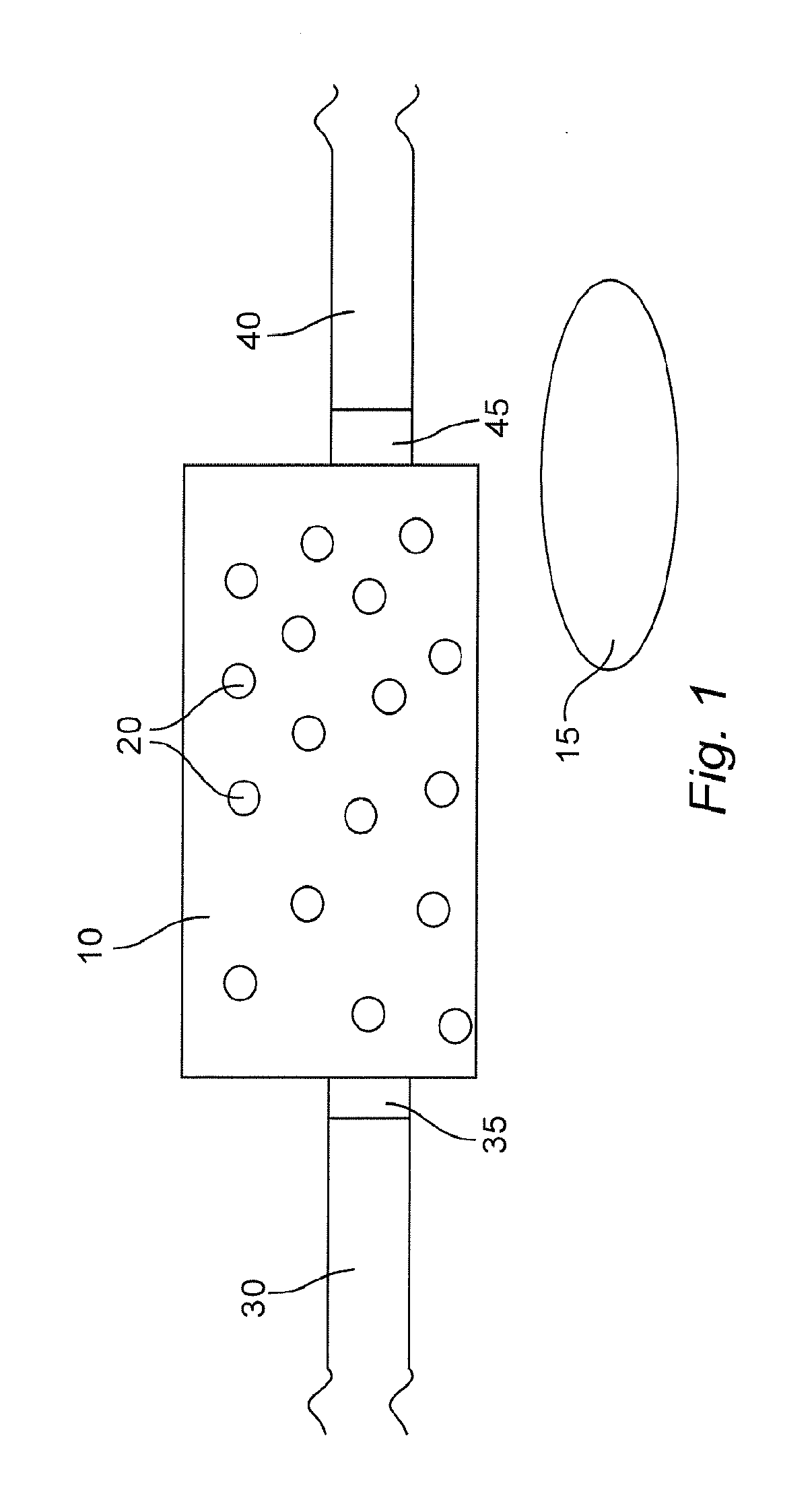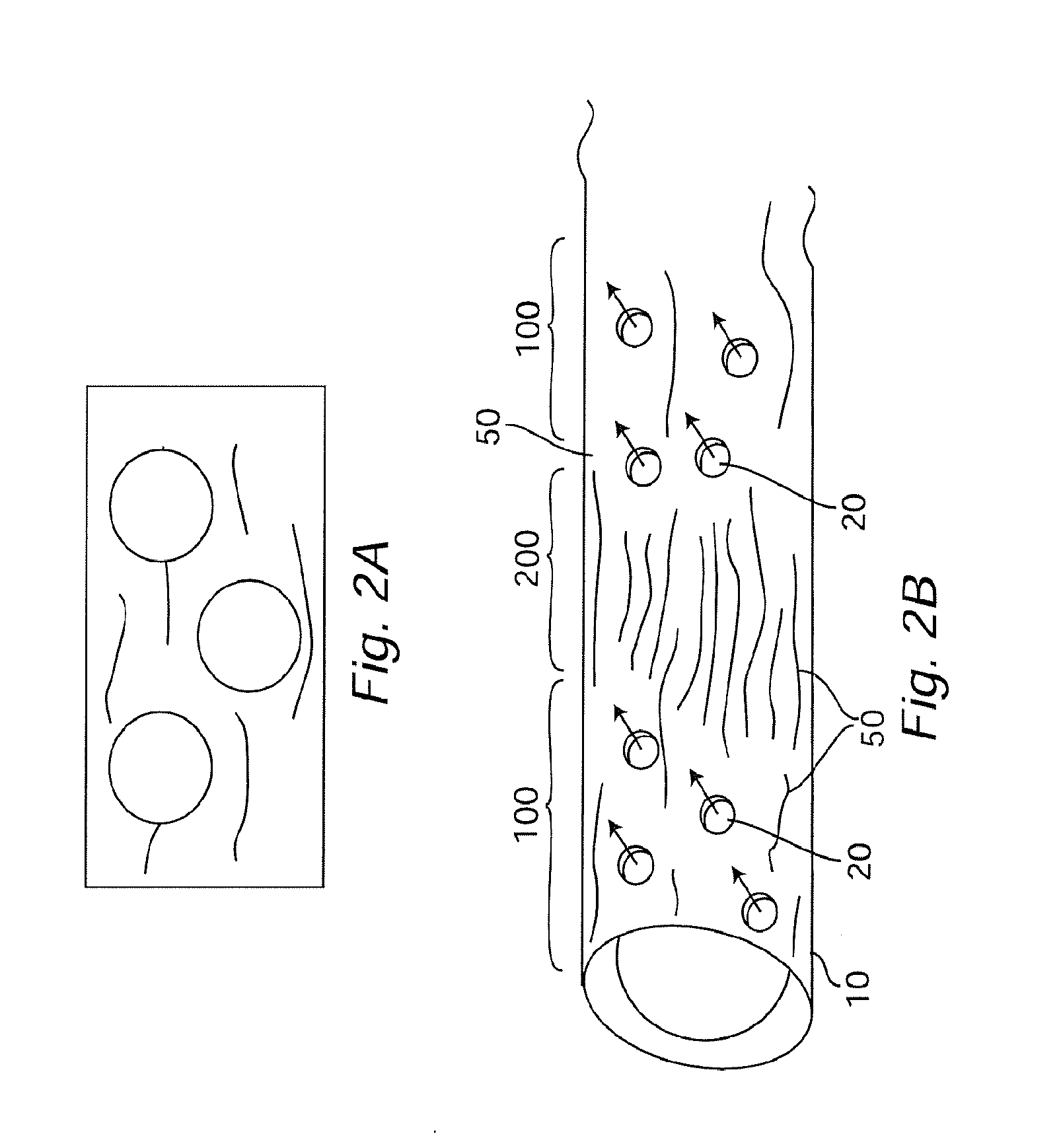Air impedance electrospinning for controlled porosity
a technology of air impedance and electrospinning, which is applied in the field of electrospinning materials, can solve the problems of limiting the ability to seed the scaffold, unable to control the pore size and overall porosity of the scaffold, and difficult to establish an even 3-d distribution of cells in any scaffolding, etc., and achieves the effects of less amenable to cell infiltration, ample structural integrity, and increased porosity
- Summary
- Abstract
- Description
- Claims
- Application Information
AI Technical Summary
Benefits of technology
Problems solved by technology
Method used
Image
Examples
example 1
[0058]Previous studies have demonstrated the need for increased scaffold porosity and cellular infiltration ([9, 18, 19]). As one representative example, 1.5 mm inner diameter (I.D.) electrospun PCL (65,000 MW, Lakeshore Biomaterials) grafts were placed in a rat aortic inter-position model for up to 1 year. The grafts were composed of 480 μm diameter PCL fibers (graft wall thickness=500 μm). Histological evaluation at 12 weeks showed evidence of arterial regeneration (neo-intima and media) with minimal cellular infiltration into the graft wall structure (FIG. 5). Results showed tissue development only on the luminal and abluminal surfaces with no aneurysm formation. The lack of any evidence of aortic aneurysm in this model indicates that electrospun PCL has excellent potential in this type of application; however, in order to translate this type of construct into human use it will be necessary to greatly enhance cellular infiltration and 3D tissue development.
[0059]To overcome the c...
example 2
[0066]Fabrication of air-flow impedance electrospinning mandrels to allow control over scaffold porosity by regulating airflow rate, pore diameter, and pore spacing as an examples for vascular graft development.
[0067]Previous electrospun scaffolds for various tissue engineering applications using solid mandrels have had limited success in regenerating tissues due to the lack of cellular infiltration due to tightly packed fibers. To overcome this limitation, novel perforated mandrels with pressurized airflow exiting the pores to impede fiber deposition have been developed, and are optimized resulting in the development of electrospun 3-D scaffolds with increased, controlled, porosity as compared to traditional electrospun scaffolds (solid mandrel). Significantly, these new methods of fabrication do not compromise the mechanical properties of the resulting scaffold.
[0068]The current electrospinning system utilizing a solid mandrel allows for mandrel rotation (0-5000 rpm) and oscillati...
example 3
[0073]Cellular distribution and tissue development after static and pressurized cellular seeding of the scaffolds.
[0074]The use of air-flow impedance electrospinning provides increased scaffold porosity that allows enhanced cellular infiltration. This example describes direct comparisons of scaffolds statically seeded (i.e. in situ cellular integration of an acellular scaffold) with pressurized seeding (i.e. in vitro tissue engineering applications) to illustrate the overall advantages of the scaffolds of the invention, which are formed by airflow exiting the mandrel during fiber deposition, which increases scaffold porosity and enhances cellular infiltration after static and / or pressurized cell seeding.
[0075]Scaffold Preparation Scaffolds are disinfected in ethanol for 10 minutes followed by three rinses in sterile saline. For static cell seeding, the tubular scaffolds are cut longitudinally and opened to form a sheet that is used to create 10 mm diameter samples (10 mm biopsy punc...
PUM
| Property | Measurement | Unit |
|---|---|---|
| Pressure | aaaaa | aaaaa |
| Permeability | aaaaa | aaaaa |
| Porosity | aaaaa | aaaaa |
Abstract
Description
Claims
Application Information
 Login to View More
Login to View More - R&D
- Intellectual Property
- Life Sciences
- Materials
- Tech Scout
- Unparalleled Data Quality
- Higher Quality Content
- 60% Fewer Hallucinations
Browse by: Latest US Patents, China's latest patents, Technical Efficacy Thesaurus, Application Domain, Technology Topic, Popular Technical Reports.
© 2025 PatSnap. All rights reserved.Legal|Privacy policy|Modern Slavery Act Transparency Statement|Sitemap|About US| Contact US: help@patsnap.com



